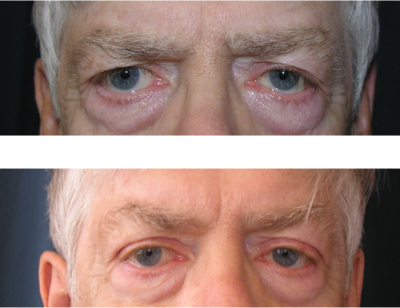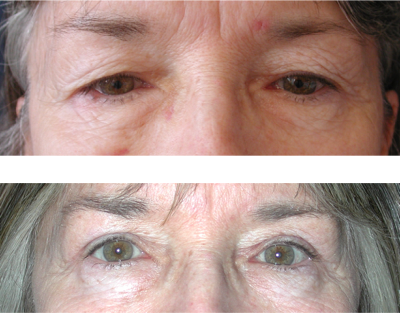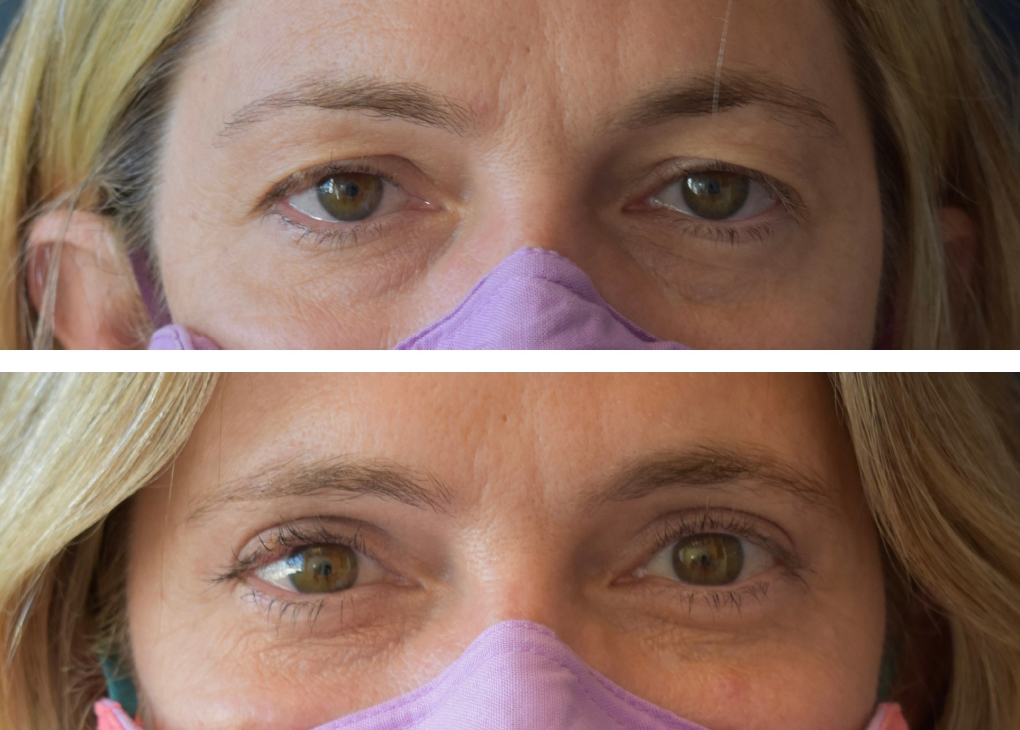Blepharoplasty
Eyelid surgery
The blepharoplasty procedure involves removal of excess skin and fat from around the eyes. This may be done to correct a visual obstruction or to obtain a more youthful appearance. Eyelid surgery may be preformed on the upper and lower eyelids, and may be combined with other procedures, such as brow lifts, and face lifts.
The incision for the removal of excess upper eyelid skin is in the crease and usually heals extremely well. The incision for the lower eyelids can be on the inside of the eyelid and completely hidden or just below the lashes in cases where skin needs to be removed. The surgery is usually done under general anesthesia.
Specifically, eyelid surgery can treat:
- Loose or sagging skin that creates folds or disturbs the natural contour of the upper eyelid, sometimes impairing vision
- Excess fatty deposits that appear as puffiness in the upper eyelids
- Bags under the eyes
- Droopiness of the lower eyelids, showing white below the iris (colored portion of the eye)
- Excess skin and fine wrinkles of the lower eyelid
Is it right for me?
Eyelid surgery is usually performed on adult men and women who have healthy facial tissue and muscles and have realistic goals for improvement of the upper and/or lower eyelids and surrounding area.
You should do it for yourself, not to fulfill someone else’s desires or to try to fit any sort of ideal image. Good candidates are:
- Healthy individuals who do not have a life-threatening illness or medical conditions that can impair healing
- Non-smokers
- Individuals with a positive outlook and specific goals in mind for blepharoplasty
- Individuals without serious eye conditions
You must tell your doctor if you have any of these medical conditions:
- Eye disease such as glaucoma, dry eye or a detached retina
- Thyroid disorders such as Graves’ disease and under or overactive thyroid
- Cardiovascular disease, high blood pressure or other circulatory disorders or diabetes
The decision to have eyelid surgery is extremely personal and you’ll have to decide if the benefits will achieve your goals and if the risks and potential complications are acceptable.
Dr. La Via and/or her staff will explain in detail the risks associated with surgery. You will be asked to sign consent forms to ensure that you fully understand the procedure you will undergo and any risks or potential complications.
Possible risks of eyelid surgery include:
- Unfavorable scarring
- Temporarily blurred or impaired vision
- Dry eyes
- Difficulty closing your eyes
- Lid lag, a pulling down of the lower eyelid may occur and is often temporary
- Ectropion, rolling of the eyelid outwards
- Bleeding (hematoma)
- Poor wound healing
- Infection
- Fluid accumulation
- Blood clots
- Numbness and other changes in skin sensation
- Anesthesia risks
- Eyelid disorders that involve abnormal position of the upper eyelids (eyelid ptosis), loose eyelid skin, or abnormal laxness of the lower eyelid (ectropion) can coexist with sagging forehead and eyebrow structures; brow lift surgery will not correct these disorders; additional surgery may be required
- Pain, which may persist
- Skin discoloration and swelling
- Sutures may spontaneously surface through the skin, become visible or produce irritation that require removal
- Deep vein thrombosis, cardiac and pulmonary complications
- Possibility of revisional surgery
- Loss of eyesight
My Recovery
After your procedure is completed, lubricating ointment and cold compresses may be applied, and in some cases your eyes may be loosely covered with gauze.
You will be given specific instructions that may include: how to care for your eyes, medications to apply or take orally to aid healing and reduce the potential for infection, specific concerns to look for at the surgical site or in your overall health, and when to follow-up with Dr.La Via
Initial healing may include some swelling, bruising, irritation or dry eyes and discomfort that can be controlled with medication, cold compresses and ointment. Irritation at the incision sites also is possible.
A special note: You must practice diligent sun protection and use darkly tinted sunglasses until the healing process is fully complete.





